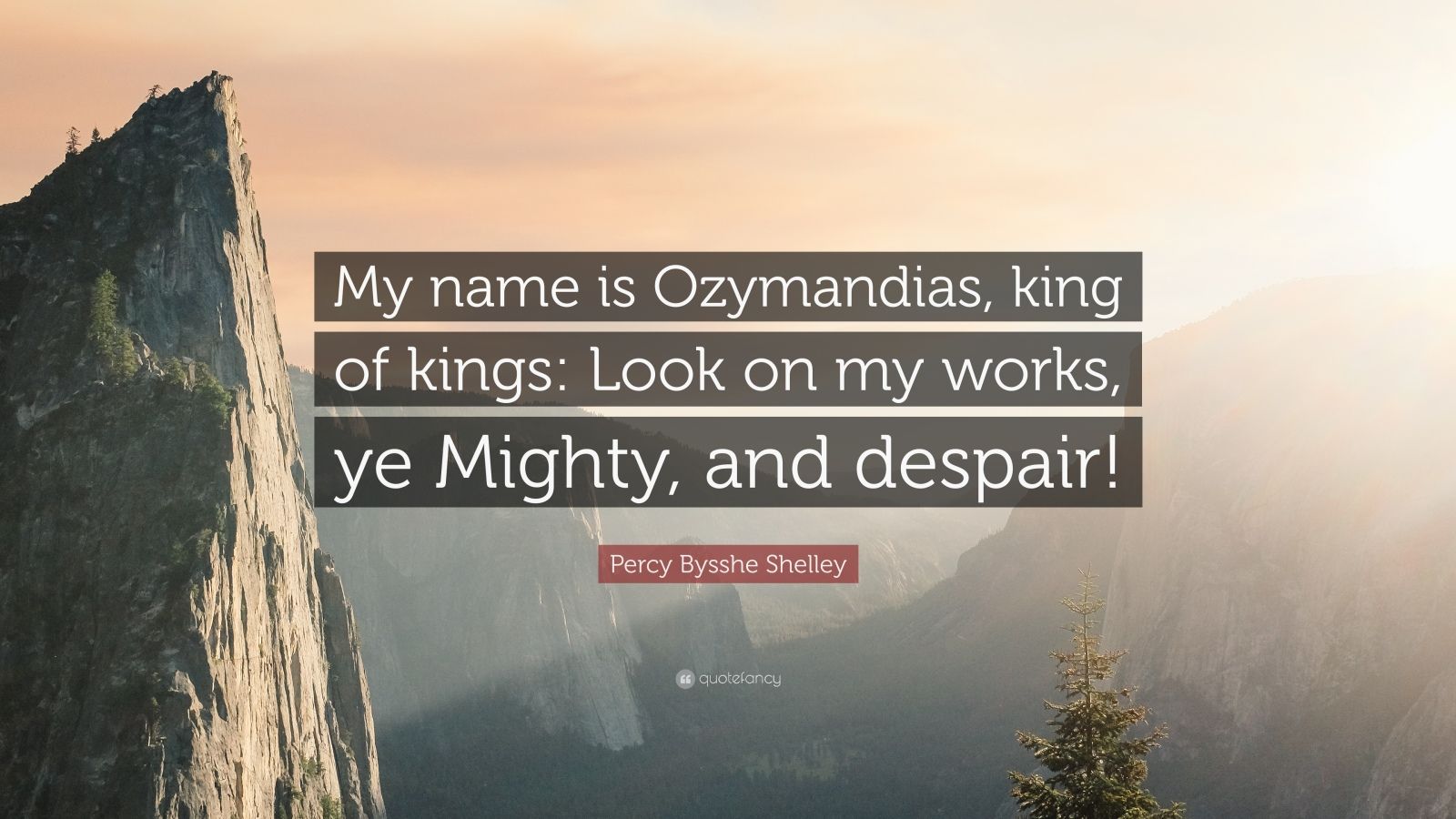

#Ozymandias percy bysshe shelley tv
The tv show Breaking Bad featured the poem "Ozymandias" in a trailer for the final season. This website shows the statue of Ramses II (Ozymandias), the discovery of which may have inspired Shelley's poem. Shelley first published "Ozymandias" in The Examiner in 1818, under the name "Glirastes." This is a scan of the first edition printing. Knowing that the landscape is a desert, we can see the winds battering the ruins until they disappear within the sand eventually, Ozymandias’s statue will. The Bodleian Library at Oxford University digitized and transcribed an early draft of "Ozymandias" from 1817 and made it available online. The Theme Of Death In Percy Shelleys Ozymandias The stone remains are half sunk within the desert, beaten and ravaged by the immeasurable force of the elements and time (4). The British Library has a short introduction to "Ozymandias" that includes excerpts of potential sources for the poem, historical information about Ramses II (Ozymandias), as well as details about Shelley's radical politics. Ozymandias is a 14-line sonnet written in 1817 by a British Romantic poet whose name is synonymous with radical social and political change. The Complete Poetical Works Of Percy Bysshe Shelley Volume 2, Percy Bysshe Shelley, 1. The first person speaker (I) recollects his meeting with the traveller, who had told him all the details about the statue of Ozymandias and also about its sculptor. This little piece of poetry is a piece of narrative, narrated by a traveller, who appears once in the poem. Ozymandias is a powerful reminder that even the mightiest of empires will. Ozymandias () is the Greek name for Ramesses II. Ozymandias by Percy Bysshe Shelley: Literary Appreciation. The poem’s titular character is a once-great ruler whose mighty empire has crumbled into dust and whose legacy is now nothing more than a fading memory.

These rule breaks hint at a poem that is going to step outside convention and say something that is disturbing and revolutionary.British Library's "Introduction to Ozymandias" In Ozymandias, Percy Bysshe Shelley addresses the futility of existence and the inevitable decline of all things. Although the rhythm is largely that of iambic pentameter, this is broken at places (such as line 3). Shelley also stretches the “rules” by using half-rhymes (stone/frown and appear/despair). However, the rhyme scheme-ABABACDCEDEFEF-is unlike that of either traditional sonnet form-Petrarchan or Shakespearean. Ozymandias, the title of Shelleys one of the best-known sonnets refers to the Ancient Egyptian pharaoh, Ramesses II. The poem is a sonnet, consisting of 14 lines with the traditional “volta” or turning point at line 9. Percy Shelley wrote competing sonnets with his friend, Horace Smith, both called 'Ozymandias.' But Smith later changed his title to 'On A Stupendous Leg of Granite, Discovered Standing by Itself in the Deserts of Egypt, with the Inscription Inserted Below,' which begins, redundantly: 'In Egypt's sandy silence, all alone, / Stands a gigantic Leg. The lone and level sands stretch far away.” Commentary and Analysis The Sonnet's Form Of that colossal Wreck, boundless and bare Look on my Works, ye Mighty, and despair! The hand that mocked them, and the heart that fed Which yet survive, stamped on these lifeless things, Tell that its sculptor well those passions read Half sunk a shattered visage lies, whose frown,Īnd wrinkled lip, and sneer of cold command,

Who said-“Two vast and trunkless legs of stone


 0 kommentar(er)
0 kommentar(er)
